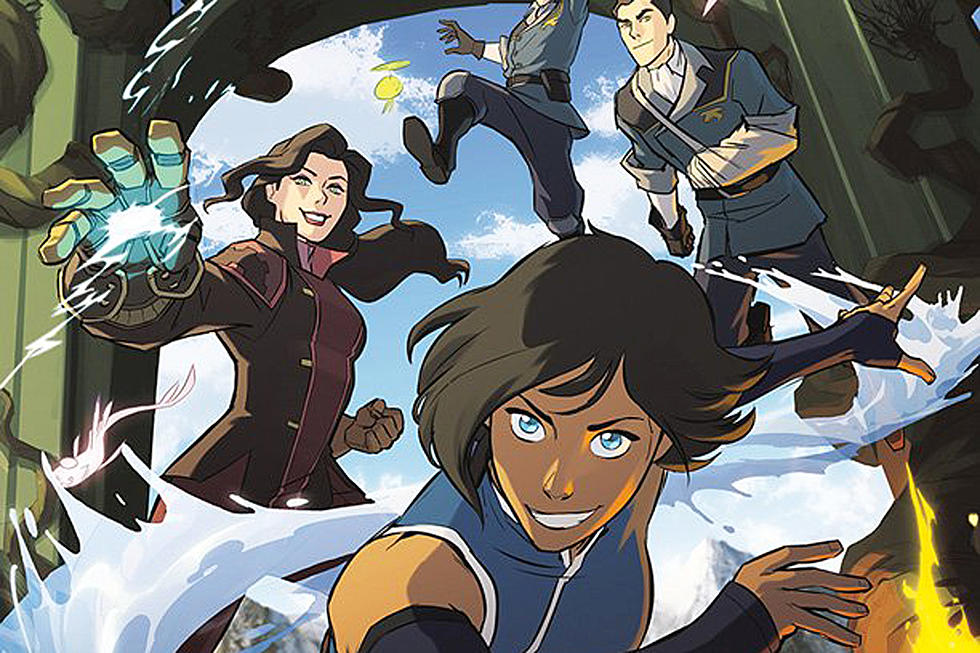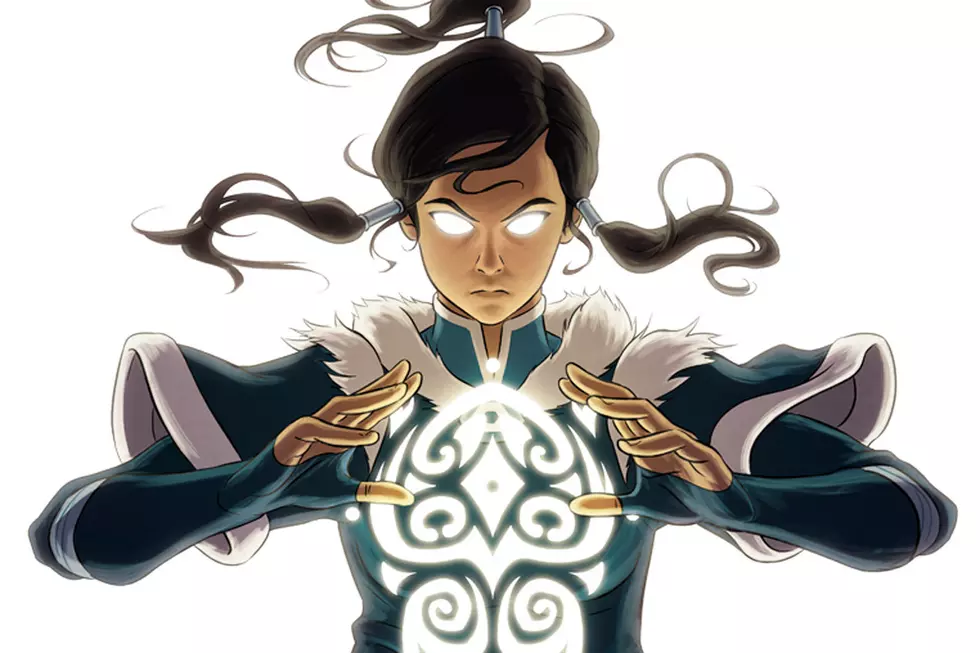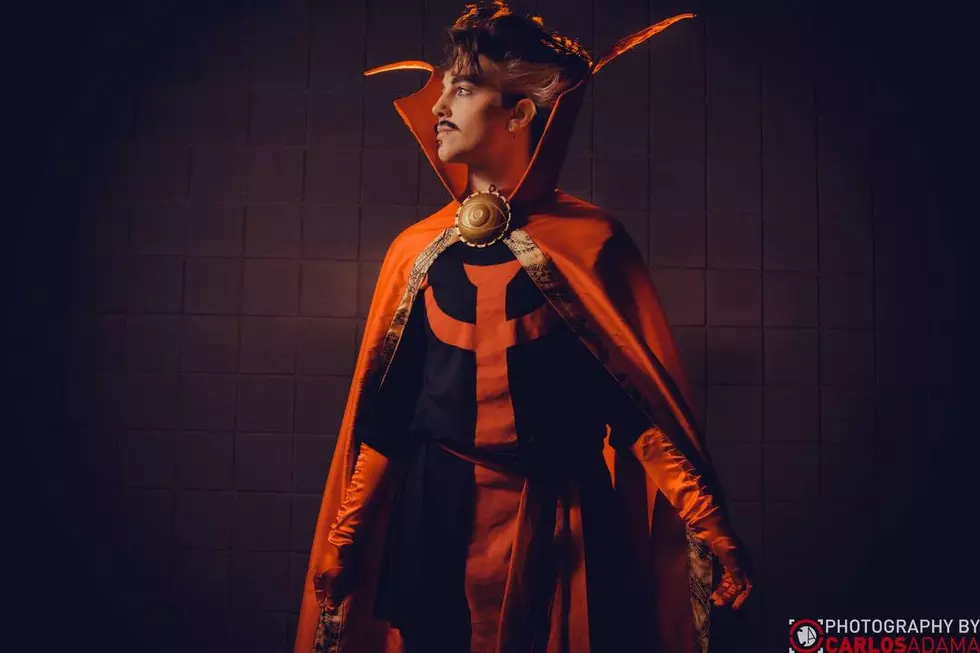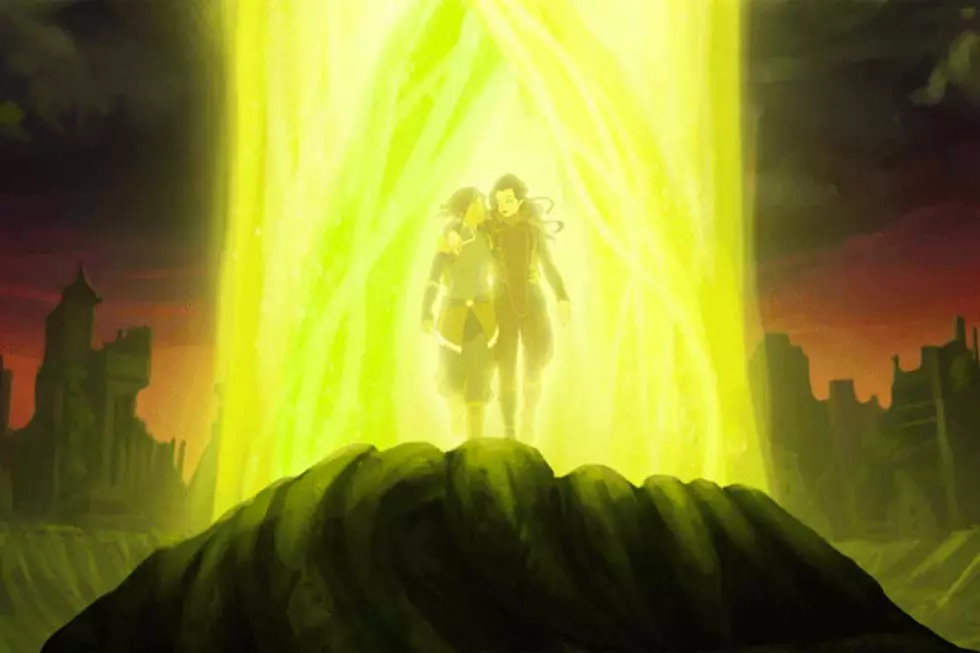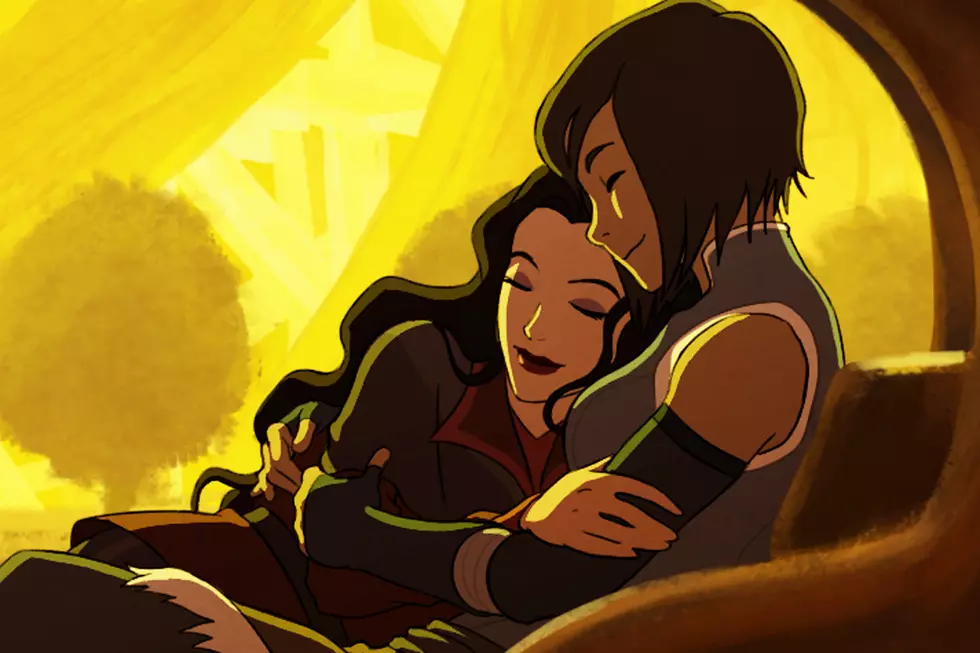
Looking at ‘The Legend of Korra’ as a Synthesis of Superhero Stories

When the long-awaited follow-up series to Avatar: The Last Airbender, The Legend of Korra, premiered on Nickelodeon in April, it was clear that creators Michael Dante DiMartino and Bryan Konietzko were trying something new. The world of Avatar, with its grounding in East Asian mysticism and dynastic Chinese history, had evolved into a more modern, democratic, 20th-Century culture. In an interview with ComicsAlliance's Caleb Goellner just before the show's premiere, Konietzko listed a wide array of places he and DiMartino looked for inspiration: "...movies, documentaries, TV dramas, novels, non-fiction books, animation, science and nature shows, and our own life experiences," plus mixed martial arts fighting.
Conspicuously absent from that list? Superhero comics. But to any fan of the genre, Korra's story shares a lot of similarities with classic superhero fiction. In advance of the show's two-part season finale this Saturday, we're taking a look at how well The Legend of Korra maps over some famous superhero archetypes, perhaps accounting for part of why this series is so beloved by so many comic book readers.Before I start listing those similarities, let me say plainly that I don't think the show's creators have injected these elements into the story as a "rip-off" or even in homage to any specific comic book mythologies. For all I know, none of these parts of the world of Korra have any grounding in the stories I'm comparing them to. But I like to view the show as a compelling synthesis of a handful of superhero influences, brought together to tell a superhero story without spandex costumes or capes.
Setting: Gotham City

One of the big differences between Korra and Avatar: The Last Airbender is that the latter is a travelogue of a group's adventures throughout the world, while the former takes place almost entirely in one place: Republic City. In that alone, the newer show feels more like a superhero tale, as virtually every superhero is inexorably tied to a home-base city. Of all the cities in comics, Republic City seems most like Batman's Gotham, with its colorfully named organized crime syndicates (Korra takes on three members of a gang called the Triple-Threat Triad in the first episode), corrupt and/or cowardly government officials, and one really good cop (imagine if Jim Gordon decided to go all Lin Beifong on Gotham's rabblerousers). In particular, the setting feels a lot like the Gotham City of Batman: The Animated Series, with its classic-style cars, radio broadcasts and Art-Deco aesthetics. There are even blimps!
Protagonist: Spider-Man

Here are some things about Korra: We see all of about a minute of her parents before she goes off to be raised elsewhere (initially by the White Lotus, then she moves in with a sort of uncle figure, Aang's son Tenzin); one of the first things she does upon arriving in Republic City is use her powers to acquire fame through sports; a selfish demand (insisting that the pro bending stadium stay open upon a threat) leads to a disaster that has personal ramifications; she doubts herself and her abilities; she's a teenager; and she's in a love triangle (or even a quadrangle).
Korra's story removes much of the death that's central to Spider-Man's origin (this is Nickelodeon, after all), but she's definitely learning about the responsibilities that come with her powers. She's often in situations where she's outmatched by the show's antagonists and knows it, too. And like Peter Parker, many of her victories are also losses of one kind or another. She's learning to be a hero as she goes.
Antagonist: Dr. Doom

We don't know a whole lot about the background of the mysterious Amon, leader of the anti-element-bending Equalists, but he's a highly charismatic and intelligent figure who wears a mask to cover a face -- a face scarred by a scam-artist firebender (or, at least, so he says). He's got a serious grudge, and he's got a handle on some sort of magic or science or combination of the two that give him abilities beyond what most humans can do. Most important among them, taking away bending powers.
Conflict: X-Men

Amon is just as much Magneto as he is Dr. Doom: He's the leader of an uprising against a group of oppressors. What's neat about Korra is how the mutant/human conflict gets turned on its head, though. It's the non-powered who are the rebels struggling for equality, while the people with powers, the benders, have complete control over the government and go to lengths like forming task forces to put down the rebellion. The conflict between benders and non-benders wasn't part of Avatar: The Last Airbender. That show's conflict was about defeating imperial tyranny. The conflict in Korra is one found more often in republics, where a group simply isn't represented.
Another neat little twist is that even though they're playing the part of the mutants here, humans still use a sort of Sentinel (though these are piloted by humans) to fight their powered enemies. Interestingly, The Legend of Korra hasn't really introduced a Professor X figure, someone who can serve as a bridge between the two sides and broker peace. But there have been hints that maybe Korra herself could get there.
Maybe next season.
The Legend of Korra's two-part season finale airs this Saturday on Nickelodeon.
More From ComicsAlliance
